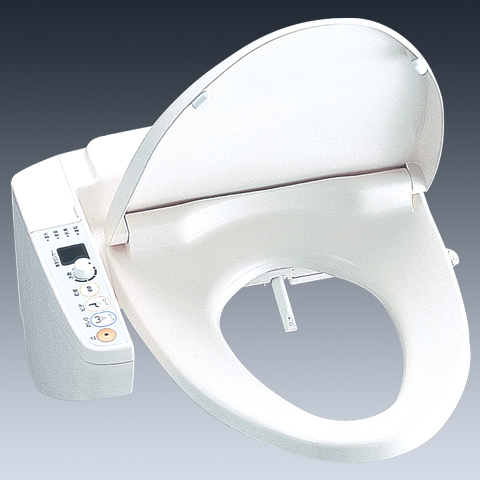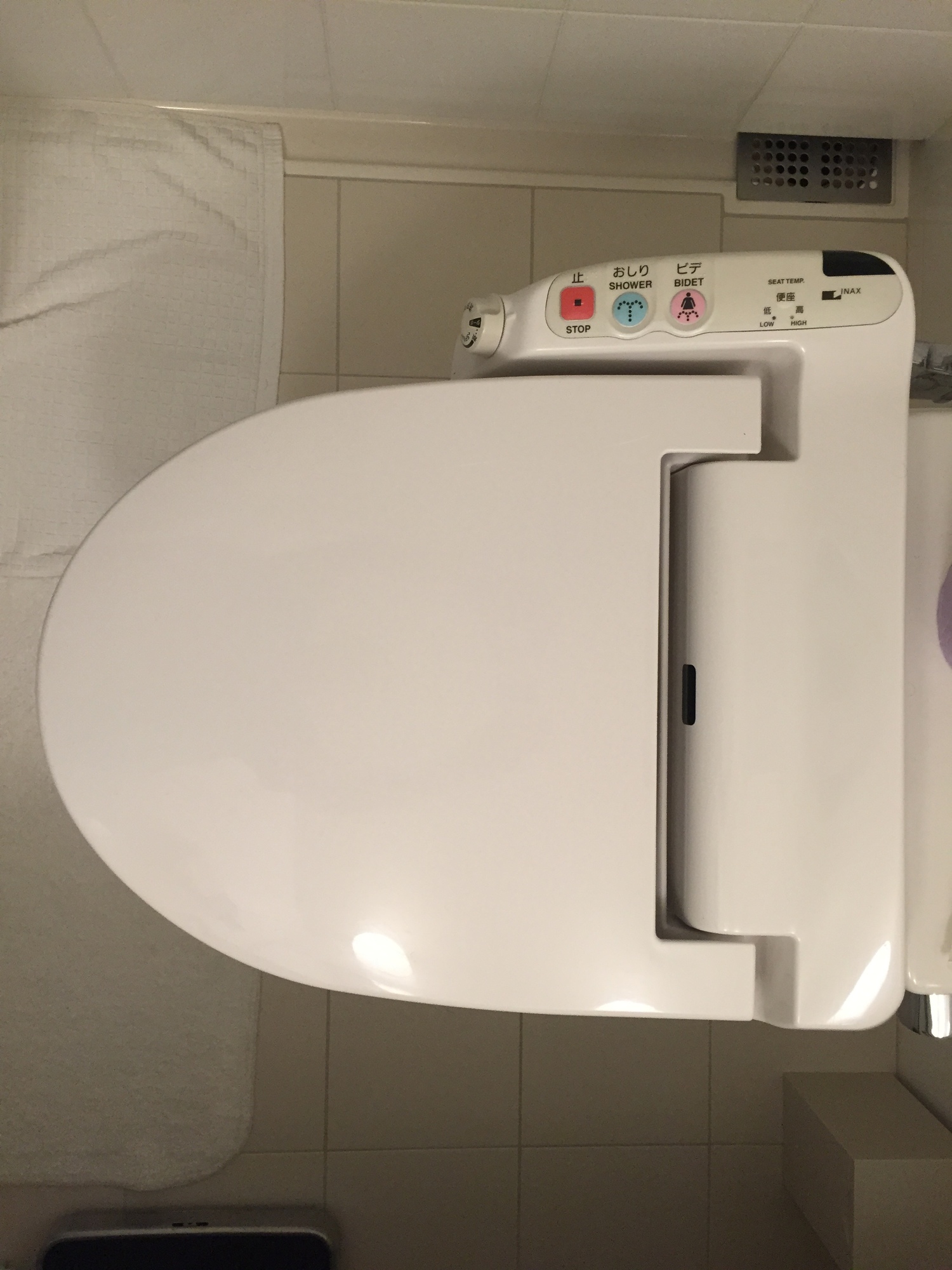Product Deconstructed: Toilets in Japan
Disclaimer: the following intends to be a humourous, not at all serious post. It’s for fun only.
I decided to continue our journey in Tokyo with this special topic.
-
From one perspective an absolutely Tokyo-related topic, from the other it is a product matter.
-
I was wondering if I can write this post in a format so that it won’t freak out people that I’m actually writing about toilets when I could write about so many other great things in Tokyo. Well, I’m a bit nervous now. :)
-
It’s a very interesting challenge from the language point of view. In Hungarian it would be easier to write this post for sure, but I’m curious if I can balance well enough using my English skills not to fall from the rope of humour, irony and professionalism.
Anyway I picked this product considering professional and personal aspects too. Toilets are products with relatively high retention rates and frequency of use. This indicates that understanding them from the product perspective is a very interesting challenge. From the personal aspect we have a special one in our home as well and after two weeks I’m still fascinated by it. :)
So there are multiple types of toilets in Japan. I won’t tell any story about the squat toilet, although no doubt it’s also an interesting (non-) product topic. I will mainly focus on the Western-style toilet, or to be better known here as the washlet (ウォシュレット).

The word washlet is a registered trademark of the Japanese toilet company Toto. In the above photo you can see the model TCF671A.
So when we arrived in Tokyo two weeks ago, we had no idea how cool our apartment will be. One thing we knew that we were very tired, just wanted to get to the Prudential Tower Residences and have some rest. This happened very fast by jumping into a taxi, showing the driver the complicated address that didn’t tell us anything and then arriving happily 25 minutes later.
Anyway after the registration we headed up the 32nd floor, where our apartment was. You know after such a long flight and some jetleg the restroom is an obvious place to visit before one goes to bed. So I did it. And there awaited me one of the well-known products of modern, high-tech Japan: the washlet.

Since then I’ve encountered various models and there are certain similarities, which allows me to generalise a little bit and start deconstructing this product.
There are many different ways to deconstruct a product. I will take the approach of looking at the value and usability aspects.
Value
As the legendary Tom Chi would say we should look for the magic moments to really understand the value of the product. Well I bet there is no need here to detail what the top magic moment of a toilet is. But let’s look at some other magic moments which are adding up the full value proposition of the washlet.
Interestingly the first magic moment happens immediately when one sits down:
the seat is heated. Tadaam!
This is truly a surprising moment. It is not a dealbreaker if one doesn’t have a heated seat but it is something that one can wish for on a cold winter night, trying to spend some time alone…
If you look at carefully you can actually set the temperature to either Low or High. In my opinion this is a typical feature creep situation. There is definitely no magic moment here that you can set this to low or high. Furthermore it also complicates the UI.
Another magic moment comes when you discover the shower function. I don’t want to ruin my blog by trying to explain in Hunglish what happens exactly when you press that button, so let me quote Wikipedia here:
“The most basic feature is the integrated bidet, a nozzle the size of a pencil that comes out from underneath the toilet seat and squirts water.”
So in case of our toilet this nozzle starts operating when you either press the Shower or the Bidet buttons. So this is a very comfortable feature and absolutely valuable. In case of some washlets you need to rely on the icon, or even worse, just the Japanese text. Well, that can give you some surprises but it’s absolutely magic when you decode which button does what. :)
To use a common product managers’ phrase: the problem is well defined and it is solved by the feature. Or to use a more modern term, the job that needs to be done is clear and this part of the product gets the job done. This feature also comes with a button that let’s you adjust the water pressure. On the contrary to the function that allows you to set the temperature of the seat, this feature is rather handy, especially if more people use the same toilet.
So these were the features of our washlet. It’s important to note that these are just the basics. Some models have more stuff built-in. Here is a list of things that you may encounter when you visit a restroom in Japan:
- water temperature adjustment
- selection of vibrating or pulsating jets of water
- mixing the water jet with soap
- opening and closing the lid automatically
- playing music
- automatic air deodorizing
These are actually not uncommon features. There are other more high-tech ones too, like automatic medical measurements, but personally I haven’t found such a washlet yet, that has this feature.
Usability
Well I’m not a usability expert but as a foreigner who barely speaks Japanese it’s not too hard to assess the usability of a washlet.
The majority of the toilets I’ve seen had the controls on the right hand side. From the product perspective this decision must be based on solid data. 70-95% of the people in the world are right handed. Easy.
So let’s look at the priority and hierarchy of the buttons. The order of the buttons on the top is: Stop, Shower, Bidet, Seat Temperature. You can adjust the water pressure by a knob that is on the side of the panel. You can see that the Shower and the Bidet buttons are laid a little bit lower then the Stop, they are also sinked a little bit and they are round. I guess they are designed this way because you can easily see that these are the two main functions and with the Stop button you can stop both of them. I have no idea why they are sinked, but maybe a designer colleague of mine will leave a comment explaining this. I’m curious. :)
Let’s look at the icons. Well, if you wouldn’t have English there, probably you wouldn’t know without trying it out what the Shower icon means. I actually asked my colleague about this and she said that when she was a child and couldn’t read Japanese she was scared of the washlet. The reason was because she didn’t know what the thing would do when she pressed the button.
There are stories out there on the internet that many people got confused and first thought that this button was the one that actually flushes the toilet. So they stood up, pushed the button and got some fresh warm water into their faces.
I believe there is some design work to do with this icon.
The Bidet icon is much more obvious I guess. Or at least it is for me. The female icon is easy to understand.
No icons for the temperature. So if you don’t speak English or Japanese this would be hard to understand. On the other hand the frequency of use of that button is probably low because of the low value as I explained above.
The spray knob is a classic knob, probably the frequency of use is higher than the temperature adjustment button and it’s easy to understand.
Let’s assess the Stop button. It’s clear that it has the highest frequency of use so it is a good decision to have it the first button there.
The position of the two other main buttons (Shower and Bidet) are not trivial. Let’s look at three scenarios.
Male & Female (mixed) household
In this situation the Bidet button is used probably more than the Shower button.
Female only household
In this situation it’s also the Bidet button that is probably used more than the Shower button.
Male only household
In this situation it’s the Shower button that is used more.
Obviously it is not the most accurate way to do the estimation but if half of the Japanese population is men and half of them are women, then based on the above the Bidet feature is more used than the Shower feature.
Obviously the decision has to take into account the target market for this model. Anyway my hunch is that the Bidet feature should have higher priority and should come first.
My verdict for the usability is that it’s not too bad, but some improvements could be done there. At least in terms of the icons.
Generally I believe that the product is good, mainly because of the value. It’s interesting though why it didn’t penetrate the market in Europe or America.
Product Discovery
I’m very curious how they did product discovery in case of the washlet. In product management there are 4 sources where value can come from:
- Qualitative research
- Quantitative research
- Gut feeling
- Overall business goals
I don’t know the exact story of the washlet, but I suspect that the first ideas came from gut feeling or maybe observatory qualitative research (i.e. someone spent too much time reading a newspaper on the toilet after a great breakfast).
Anyway I’m sure that they did plenty of usability tests and doing some nowadays too. Well, user testing the shower feature must be a funny job to do as a researcher. I leave it to your imagination how you would do that.
The quantitative side isn’t easy too. To answer the left handed versus right handed question it’s easy to find some data, but there is no real-time analytics to see how certain behavioural patterns emerge. It would be funny though to have logging implemented and you could build a funnel in Mixpanel to look at the various behaviours. So much medical knowledge could be extracted from that. I’m sure a better product could be built based on this data.
And with this last question we arrived to the closing section and by that possibly the funniest and most ironic question of our startup world.
Are the product people who are working on the washlet making the world a better place?
Well it’s already late on a Sunday evening to think too much about this. Therefore I stop writing here for today and leave this question to you to answer. :)
Good luck fellas!
Laz